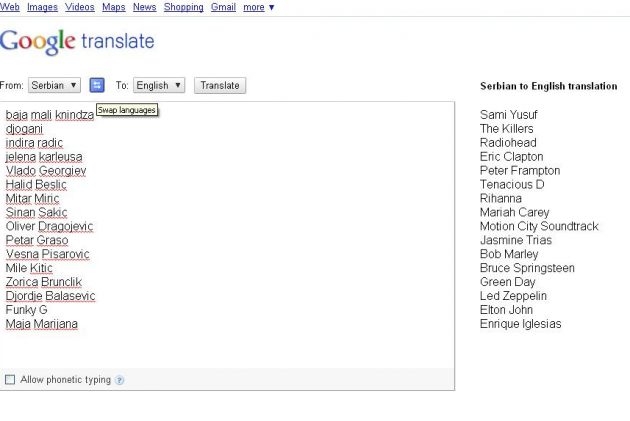Breaking Down the Language Barrier with Technology

US Department of Agriculture/Flickr
We take a look at mobile technologies to see how they are currently helping people learn languages at a faster pace, and consider their future potential.
As technology continues to evolve, an increasing number of people are implementing it in their daily lives. For most people, the daily use of technology has become a necessity, whether it’s watching TV or using a mobile device such as a smartphone, tablet, or notebook.
Unsurprisingly, our dependence on mobile technology means it has begun to take an important role in formal and informal learning.
Mobile Technology Advantages
As mobile technologies can be accessed at anytime and anywhere, they are helping to break down language barriers, making language learning much easier and quicker. This is particularly true of smartphones.
A recent survey conducted by Anderson Language & Technology Center at the University of Colorado showed that 60 per cent of foreign language students and nearly 14 per cent of instructors use smartphones to learn languages.
These figures can be attributed to the wide variety of apps available, which users can access on the go and are supportive of face-to-face learning.
The survey, as cited by Educause, also found that the two most popular types of applications for language learning were dictionary apps (45%) and translation apps (33%).
Mobile technology also offers the advantage of SMS messaging, which can be used to support the teaching and learning of languages. With text messages, tutors can reach out to their students at any location, as outlined by researchers Adelina Moura and Ana Amelie Carvalho of the University of Minho in Portugal.
Skype is another tool that can be used on smart devices by students for face-to-face language learning, linking them up with native speakers outside of the classroom, anywhere in the world.
Mobile Versus Computer-Assisted Learning

belgraded.com/Flickr
As mobile technologies become more advanced, and the number of language learning apps grows, language students are leaving computer-assisted learning behind.
Why? Because computer-assisted learning runs mainly on simple software and is limited to specific language rules, when most languages are very complex and can contain different definitions for the same words, according to Tofugu.
This often means that when using computer-assisted software to translate, the computer generates a garbled and nonsensical string of words.
Take, for instance, Google Translate. In an early version, Google founder Sergey Brin received an email from a fan in Korea. When Brin copied the email into Google Translate, the translation he got was, ‘The sliced raw fish shoes it wishes. Google green onion thing.’ This is certainly not what the fan wanted to communicate, as the New York Times reported.
While Google Translate has improved since its launch, it currently relies on statistical information, which is far from ideal, says Tofugu, as there are many nuances in language that are hard for a machine to catch. Another problem is that machines have difficulties in detecting metaphors and slang.
Computer-assisted programs are likely to fall further out of favor as developers of mobile technologies continue to up their game.
Technology of the Future
The arrival of Microsoft’s new Skype Translator may well hint at the way people across the world will soon communicate.
The Skype Translator will, for the first time in history, enable conversations to be translated in real-time. This means that students could take language lessons via Skype, making the learning process easier and quicker.
There is also Google Glass, a wearable smart device, which in the future—i.e., once its initial teething problems have been worked out and it gains popularity— will be used by students and teachers to stay connected to an interactive environment featuring online tools, suggests Foradian.
With Google Glass, students will also be able to record classes in real-time for future reference, and more importantly, they could learn and speak languages on the go rather than having to fiddle around with their phones.
As apps for children is a growing market, and one that doesn’t appear to be slowing down, it is highly likely that more engaging and interactive applications, which are game or cartoon based, will soon arrive to help children learn languages much quicker.
The Technology Barrier and the Elderly
For the majority of older people, however, the use of technology for language learning purposes looks unlikely. This year, a focus group held by Doro found that out of 40 elderly consumers, only two were able to complete the task of adding a contact to an Android device, reports the BBC.
Other research suggests that older people’s unwillingness to learn new things, and their fear or lack of available brain capacity, deters them from using mobile devices or the internet.
Some experts argue that the next generation of older people will be more tech savvy because they will have worked with technology, but Annika Small, chief executive of Nominet Trust, says that other factors should be considered, including weakened eyesight, hearing, circulation and memory loss.
A Technological Education
For many students, mobile technology makes acquiring a new language easier, as it opens up the methods of communication between teacher and learner. No longer are teachers and their students limited to a classroom.
However, for those who prefer face-to-face learning, including older people, mobile technologies such as apps and smartwear offer additional support that can be accessed anytime, anywhere.
Language Trainers enables student to learn outside the classroom with the option of Skype classes or a combination of telephone and e-learning. For more information, Contact Us.
